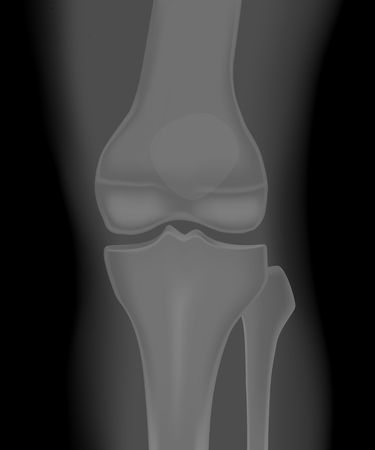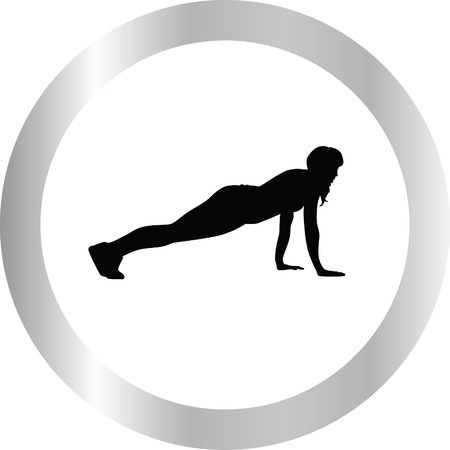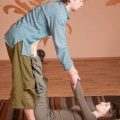1. Understanding ACL Injuries in Athletes
Overview of the Anterior Cruciate Ligament (ACL)
The anterior cruciate ligament, or ACL, is a crucial stabilizer in the knee joint. It connects the thigh bone (femur) to the shin bone (tibia), helping control knee movement and prevent it from moving too far forward. ACL injuries are common among athletes in the United States, especially those who play sports that involve sudden stops, pivots, or jumps.
Common Mechanisms of ACL Injuries in U.S. Sports
In American sports culture, ACL tears often happen during high-intensity activities. Sports like football, basketball, soccer, and lacrosse see higher rates of these injuries due to the fast direction changes and unpredictable movements they require. Most ACL injuries are non-contact, meaning they occur without direct collision with another player. Instead, an awkward landing from a jump or a rapid twist of the knee can cause the ligament to tear.
Typical Situations Leading to ACL Tears
| Sport | Common Injury Scenario |
|---|---|
| Basketball | Landed awkwardly after jumping for a rebound or layup |
| Soccer | Sudden pivoting or changing direction while running |
| Football | Cutting maneuvers or rapid stops on turf fields |
| Lacrosse | Dodging defenders with quick side-to-side movements |
| Volleyball | Lands after blocking at the net with knee turned inward |
Key Risk Factors for Athletes
- Gender: Female athletes have a higher risk due to differences in anatomy and muscle activation patterns.
- Previous ACL injury: A prior tear increases the chance of injuring the same or opposite knee.
- Poor neuromuscular control: Weakness in core or leg muscles can lead to improper knee alignment during activity.
- Playing surface: Artificial turf may increase injury risk compared to natural grass.
- Shoes and equipment: Certain footwear may not allow for enough movement, putting extra stress on the knee.
- Athletic technique: Incorrect landing or cutting techniques add strain to the ACL.
Quick Facts: Who Is Most at Risk?
| Risk Factor | Description | Example Population in U.S. Sports |
|---|---|---|
| Youth athletes (ages 15-25) | Participate in high-impact sports during growth spurts; coordination still developing | High school and college athletes in soccer and basketball teams |
| Female athletes | Anatomical and hormonal differences contribute to higher risk vs. males in similar sports settings | NCAA women’s basketball and soccer players |
| Athletes returning from prior injury | Tissues may not be as strong or coordinated as before injury occurred | Athletes cleared for play after previous ACL reconstruction surgery |
This understanding is key for designing effective rehabilitation programs and setting safe return-to-play timelines for athletes at every level.
2. Evidence-Based Physical Therapy Interventions
Current Best Practices in ACL Rehabilitation
Rehabilitating an anterior cruciate ligament (ACL) injury takes a team approach and the use of up-to-date, evidence-based physical therapy (PT) interventions. Below are the key components that PTs in the United States use to help patients safely and effectively recover from an ACL injury.
Manual Therapy
Manual therapy is used early on to help reduce pain, swelling, and restore knee motion. Common hands-on techniques include:
- Soft tissue mobilization: Helps decrease muscle tightness around the knee.
- Patellar mobilization: Maintains kneecap mobility, which can get stiff after surgery or injury.
- Joint mobilization: Improves overall knee joint flexibility and helps with range of motion.
Neuromuscular Re-education
This part of rehab focuses on retraining muscles to work together correctly, which is crucial for stability and preventing future injuries. Techniques may include:
- Balance training: Using balance pads or single-leg stance exercises to improve control.
- Proprioception drills: Activities like using a wobble board to help your body sense where your knee is in space.
- Gait training: Teaching proper walking patterns as you recover strength and movement.
Progressive Strengthening Protocols
A structured strengthening program is essential for building muscle support around the knee. The focus shifts from gentle activation early on to more challenging exercises as healing progresses.
| Rehab Phase | Main Goals | Sample Exercises |
|---|---|---|
| Early Phase (0-4 weeks) | Pain/swelling control; regain gentle motion; activate quadriceps | Ankle pumps, quad sets, heel slides, straight leg raises |
| Middle Phase (4-12 weeks) | Increase strength; improve balance; restore full motion | Mini squats, step-ups, stationary bike, balance drills |
| Late Phase (12+ weeks) | Build power and agility; prepare for sports/activity return | Lunges, jumping drills, sport-specific movements, resistance bands |
Individualized Care Is Key
No two ACL injuries are exactly alike. Physical therapists tailor each plan based on your age, activity level, type of surgery (if any), and your unique goals. Regular reassessment ensures that exercises are both safe and challenging enough to promote progress without risking reinjury.

3. Functional Progression and Milestones
After an ACL injury, helping patients return to their favorite sports or everyday activities requires a step-by-step approach. In the U.S., physical therapists rely on objective criteria and clear milestones to make sure each stage of recovery is safe and effective. Lets break down how progress is tracked, goals are set, and exercises are adjusted to meet specific athletic needs.
Tracking Progress with Objective Criteria
Physical therapists in America use measurable tests to monitor recovery after ACL reconstruction. This helps ensure patients are not moving too quickly or slowly through rehab stages. Common tools include:
- Range of Motion (ROM): Measuring knee flexion and extension with a goniometer.
- Strength Testing: Using handheld dynamometers or isokinetic machines to compare strength between legs.
- Functional Tests: Single-leg hop tests, agility drills, and balance assessments.
- Pain & Swelling Scores: Regularly checking for pain, swelling, or other symptoms.
Setting Goal-Oriented Milestones
Rehabilitation milestones help guide the rehab process and keep patients motivated. Here’s a typical timeline for functional progression after ACL reconstruction in the U.S.:
| Phase | Timeframe | Main Goals | Objective Criteria |
|---|---|---|---|
| Early Rehab | 0-2 weeks | Reduce swelling, regain knee extension, gentle ROM | Knee extension within 5° of opposite leg; minimal swelling |
| Mid Rehab | 2-6 weeks | Increase ROM, improve quad control, light weight-bearing | Able to perform straight leg raise without lag; >90° knee flexion |
| Lateral Movement & Strengthening | 6-12 weeks | Full ROM, build muscle strength, begin balance work | No limp during walk; at least 70% quad strength compared to uninjured side |
| Advanced Training | 3-6 months | Add jumping/agility drills, sport-specific skills | No pain/swelling with activity; pass single-leg hop test (at least 85% of uninvolved leg) |
| Return-to-Play Prep | 6+ months | High-level agility, cutting/pivoting drills, confidence in knee function | Pass all functional tests; clearance from surgeon/PT; psychological readiness assessed (e.g., ACL-RSI scale) |
Adapting Exercises for Athletic Skill Requirements
Athletes need more than basic strength—they require explosive power, quick changes in direction, and mental confidence. PTs in the U.S. often tailor late-stage rehab based on the patient’s sport:
- Basketball/Football: Plyometric jumps, lateral shuffles, sprint-start drills.
- Soccer: Cutting maneuvers, ball-handling under load, multidirectional running.
- Running: Gradual return-to-run programs focusing on cadence and stride symmetry.
- Dancers/Gymnasts: Balance on unstable surfaces, single-leg landings, proprioceptive tasks.
The Importance of Individualization
No two patients recover exactly the same way. In America’s evidence-based PT culture, therapists adjust timelines and exercise difficulty based on objective data and patient feedback. Regular check-ins make sure athletes progress safely—reducing risk of re-injury while building both physical and mental readiness for return to play.
4. Psychological Readiness and Motivation
Understanding Mental Barriers After ACL Injury
Recovering from an ACL injury isn’t just about physical healing. Many athletes face mental challenges like fear of reinjury, anxiety about performance, and decreased confidence. Addressing these psychological barriers is key to a successful rehab process and a safe return to play.
Building Athlete Confidence
Physical therapists in the U.S. often use evidence-based strategies to help athletes regain their confidence during ACL rehab. Some common approaches include:
| Strategy | Description |
|---|---|
| Gradual Exposure | Slowly reintroducing sports-specific movements to reduce fear and build trust in the knee. |
| Positive Reinforcement | Celebrating small milestones (e.g., improved range of motion, strength gains) to motivate progress. |
| Goal Setting | Setting short- and long-term goals that are realistic and measurable, making progress more visible. |
| Visualization Techniques | Encouraging athletes to mentally rehearse successful movements and game situations. |
Utilizing U.S.-Based Motivational Tools
Motivation is crucial throughout ACL rehabilitation. In the United States, therapists often use tools and resources familiar to American athletes:
- Sports Psychology Apps: Apps like Headspace or Calm can help manage stress and promote mindfulness during recovery.
- Peer Support: Joining support groups or connecting with former athletes who have successfully returned to play provides real-life inspiration.
- Family and Team Involvement: Encouraging family members, coaches, and teammates to offer positive feedback can boost morale and commitment.
- Mental Health Professionals: Working with sports psychologists familiar with U.S. sports culture can address specific fears related to returning to competition.
Sample Goal-Setting Table for ACL Rehab
| Phase | Example Goal |
|---|---|
| Early Rehab | Bend knee to 90 degrees without pain within 2 weeks. |
| Mid Rehab | Sprint at 75% speed by week 12. |
| Late Rehab | Participate in full-contact practice by month 6. |
| Return-to-Play | Compete in first official game at 9 months post-surgery. |
The Importance of Mental Support in Return-to-Play Decisions
Athletes who feel mentally prepared are less likely to experience setbacks or reinjury. Using a combination of motivation techniques and psychological support ensures a holistic approach, helping each individual reach their full potential both physically and mentally as they return to play after an ACL injury.
5. Return-to-Play Guidelines and Risk Management
Criteria-Based Return-to-Play Recommendations
In the United States, returning to play (RTP) after an ACL injury is a big decision that should be based on specific criteria, not just time. Physical therapists and doctors use evidence-based guidelines to make sure athletes are really ready before going back to sports. Here are some key criteria often used:
| Criteria | Example Benchmarks |
|---|---|
| Knee Strength | At least 90% quadriceps and hamstring strength compared to the uninjured leg |
| Functional Testing | Hop tests (single-leg hop, triple hop) within 90% of the other leg |
| Pain and Swelling | No pain or swelling during or after exercise |
| Range of Motion | Full knee motion, same as the uninjured side |
| Psychological Readiness | Athlete feels confident and ready to play (measured by questionnaires like the ACL-RSI) |
Collaboration with Sports Medicine Professionals
Successful return-to-play decisions in American sports require a team approach. Physical therapists work closely with orthopedic surgeons, athletic trainers, coaches, and sometimes psychologists. This teamwork helps make sure all aspects of recovery—physical, mental, and sport-specific skills—are covered.
Key Roles in RTP Collaboration:
- Physical Therapist: Guides rehab progression and functional testing.
- Orthopedic Surgeon: Monitors surgical healing and overall knee health.
- Athletic Trainer: Bridges rehab to on-field activities and tracks progress at practices or games.
- Coach: Adjusts training loads and expectations based on athlete’s stage of recovery.
- Mental Health Specialist: Supports confidence and addresses fear of re-injury when needed.
Injury Prevention Strategies for American Sports
Athletes in popular U.S. sports like football, basketball, soccer, and lacrosse face unique challenges after ACL injuries. Preventing re-injury is a top priority. Evidence shows that regular injury prevention programs can help reduce the risk of another ACL tear. These strategies focus on building strength, improving balance, teaching proper landing techniques, and increasing agility.
Common Components of Injury Prevention Programs:
- Plyometric exercises (jump training)
- Neuromuscular training (balance drills, single-leg exercises)
- Cues for safe cutting/landing mechanics (“knee over toe,” “soft landings”)
- Sport-specific agility drills (cone drills for soccer/basketball; ladder drills for football/lacrosse)
- Consistent warm-up routines such as FIFA 11+ or PEP Program for soccer players
The combination of clear return-to-play criteria, teamwork among sports medicine professionals, and targeted prevention programs is key for American athletes getting safely back into the game—and staying there.


